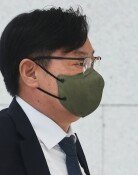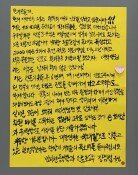Excrement pickup was a high money business during Japanese colony
Excrement pickup was a high money business during Japanese colony
Posted April. 28, 2016 07:27,
Updated April. 28, 2016 07:32

Professor Seo Ho-cheol at the Academy of Korean Studies plans to list his paper "Seoul's excrement pickup systems: formation and change from the 1890s to the 1930s" at the academic paper "Seoul and History."
Seo said Seoul's excrement was collected by a private trader for free to sell it to farmers within and outside the capital until the late Joseon Dynasty, but the Hanseong Sanitation Committee was set up and stole the rights at the end of 1907 on proposal by Ito Hirobumi, the Korean Peninsula's first Japanese governor-general who led the colonization of Korea.
The Doknip Shinmun says that the government in 1898 ordered a government agency to issue tickets to these truckers for operation and allocated areas to them. But with the set up of the committee, these truckers were virtually banned to operate, and the collection activity became the role of public entity. The committee started to collect money from residents in Seoul.
This was a massive for-profit business. "The committee sold waste that could be used as fertilizers and blood from slaughterhouse at auctions, which enabled a surplus of more than 20,000 won (17.41 dollars) per year between 1908 and 1913, and the amount reached 70,000 won (60.92 dollars) in 1909," Seo said. "There were even rumors that a Japanese official wanted to become CEO of a firm that sells fertilizers to farmers." Back then, monthly rents for a room in a store was 5 won (0.4 cent) to 6 won (0.5 cent).
Since 1914, the Seoul city government was in charge of the collection, but managed the business with allocated budget instead of collection from residents. Costs were huge. In 1914, waste and excrement treatment costs amounted to around 180,000 won (156 dollars), accounting for 81 percent of total spending, and more than half of the budget was used until 1920.
Discrimination between Japanese and Koreans was also apparent in excrement treatment. The Dong-A Ilbo wrote on March 23, 1924 that a Japanese residential area in southern Seoul saw more excrement treatment workers and cleaners than in northern areas resided by Koreans, while treatment equipment and facilities were also better.
Seo is a social historian who has been studying family registry system and resident monitoring system under the Japanese colonial era. "We should pay attention not only to physical and economic abuse by the Japanese authority but also to domination of daily life including health and sanitation," the professor said.
조종엽기자 jjj@donga.com
Headline News
- Med professors announce intention to leave hospitals starting Thursday
- Bridge honoring Sgt. Moon Jae-sik unveiled in Pennsylvania
- Chief of Staff Chung tells presidential secretaries to stay away from politics
- US FTC bans noncompete agreements
- N. Korea launches cyberattacks on S. Korea's defense companies







